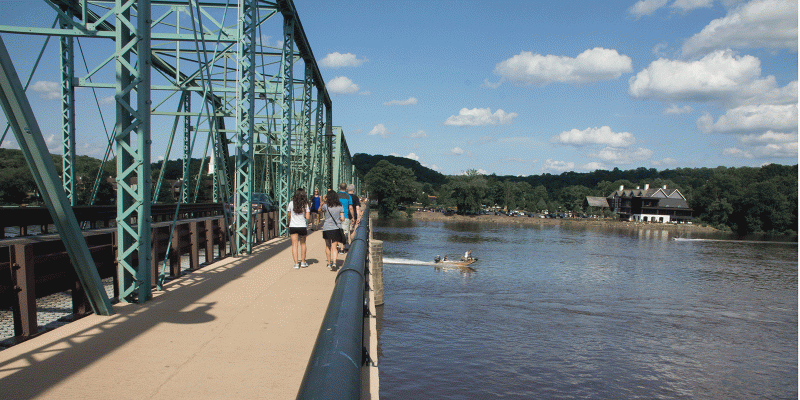The Sourlands is in trouble.
More than a million trees are dying there because of an invasive insect called the emerald ash borer that’s wreaking havoc across much of the country, according to an estimation by the New Jersey Forest Service.
“The Sourlands have a higher proportion of ash in their forest than the rest of the state, so they’re looking at a bigger impact from emerald ash borer than other forests around the state,” forest service supervising forester Bill Zipse says.
The Sourlands is a sprawling region that encompasses parts of Hunterdon, Mercer, and Somerset counties in Central New Jersey. The 90-square mile area is centered on Sourland Mountain, a 17-mile-long ridge that extends from Lambertville through Hopewell Township to the western edge of Hillsborough Township.
Five interns from the Hopewell-based Sourland Conservancy are trying to offset some of the damage. In September, Will Bradford, Eve Cooke, Kelsy Geletej, Robert Lucas and Lillian Wurtz – all students at Raritan Valley Community College – planted more than 1,000 trees in Sourland Region public parks and preserves, and the budding ecologists are on track to plant another 1,000 before the end of fall.

“I grew up in the Sourlands. It means a lot to me to be able to make a difference in an area that I know so well,” Wurtz says.
The Sourlands is home to 57 state-listed, threatened, and endangered plant and animal species.
“Some [bird] species are already at risk of extirpation from other threats,” Juanita Hummel, president of the Washington Crossing Audubon Society, told the Bucks County Herald. “They too will suffer as the forest, already under duress and unable to regenerate itself because of excessive deer browse and invasive alien vegetation, will additionally lose mature ash trees comprising 20% of the canopy. Without intervention … some of our beloved deep-forest bird residents and migratory visitors would disappear from our area altogether.”
The Sourland Conservancy received a $10,000 grant from American Tower to purchase trees and shrubs to “restore the understory, stabilize stream banks, begin to fill holes in the tree canopy, and provide critical habitat for resident and migratory wildlife.”
The trees range in size from tubelings to two-gallon pots. They’re being planted one-by-one in tree tubes and wire cages, as well as larger fenced areas up to a half-acre in size. Over the coming months, the conservancy and partner staff and volunteers will monitor the fenced areas and remove any invasive vines or shrubs.
Meanwhile, student volunteers, service-learning students, and interns from RVCC will measure the success of the plantings.
“I took this internship to finally have the opportunity to help give back in a way I hadn’t been able to on my own,” Kelsy Geletej says. “It’s an amazing feeling giving back to the environment like this.”




Leave a Reply